
Hiroyuki Sakuragi
General Manager, Data Technology Center
Marketing Director
Finding Information to Capture Opportunities
In modern society, which is flooded with massive amounts of information (big data), rapid advances in artificial intelligence (AI) and related technologies have heightened expectations for the use of big data to improve the accuracy of business and marketing, so as to enhance corporate competitiveness.
Dentsu is working with the Dentsu Group and its partner companies to develop a variety of business-related methodologies and solutions. Its motivation is based on the recognition that the goal of digital transformation is to build systems that uncover information that is useful for capturing opportunities. This is done through big data analysis, which is then used in business and marketing decision-making.
To capture opportunities, one can use four categories of information, namely, that which is: currently not being extracted; inaccessible, due to issues preventing its capture; accessible if tentative solutions are brought to the issues; and takeaways from the verification of tentative solutions.
If the four categories can be accessed and the business environment thus be improved, the accuracy of business and marketing decision-making processes also can be improved. This should result in more reliable business opportunities.
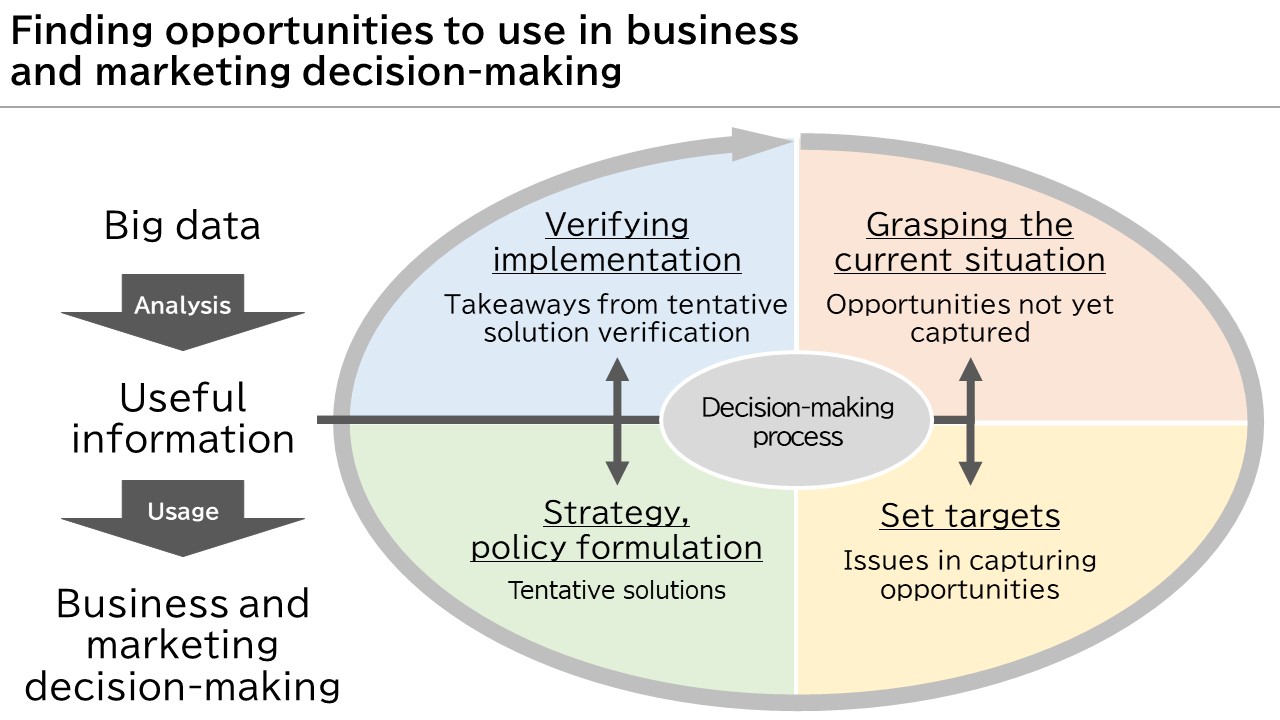
Identifying Useful Information
If 100 units of a certain product were sold, issues facing the brand would differ substantially, depending on whether one person purchased all 100 units, or 100 people purchased one unit each.
In the former case, there may be issues with recognition and, in the latter, with satisfaction. If strategies and measures are implemented without an accurate grasp of the issues, there will be a limited number of opportunities to capture.
Further, if strategies and measures are implemented without incorporating takeaways, such as which elements of past strategies and measures were effective in terms of changing target customer awareness and behavior (e.g., brand recognition, product purchase and satisfaction), the capture of opportunities will also be limited.
Ideally, we want as much information as possible, since overlooking particulars useful for finding opportunities can lead to their being lost. Thus, before recommending customer-oriented business analysis, Dentsu clarifies relationships among strategies, measures, customers (their awareness and behavior), revenue, and expenses.
Through big data analysis, we extract trends and principles related to the impact of strategies and measures (constituent elements) on customer awareness and behavior; the impact of changes in customer mix on sales; and the impact of strategies and measures on productivity.
We then analyze these elements systematically to discover opportunities, issues, tentative solutions, and takeaways. To facilitate the capture of more opportunities, we incorporate this information in various business and marketing decision-making scenarios. These include advertising, sales promotion, and customer relationship management, as well as product development and supply chain management.
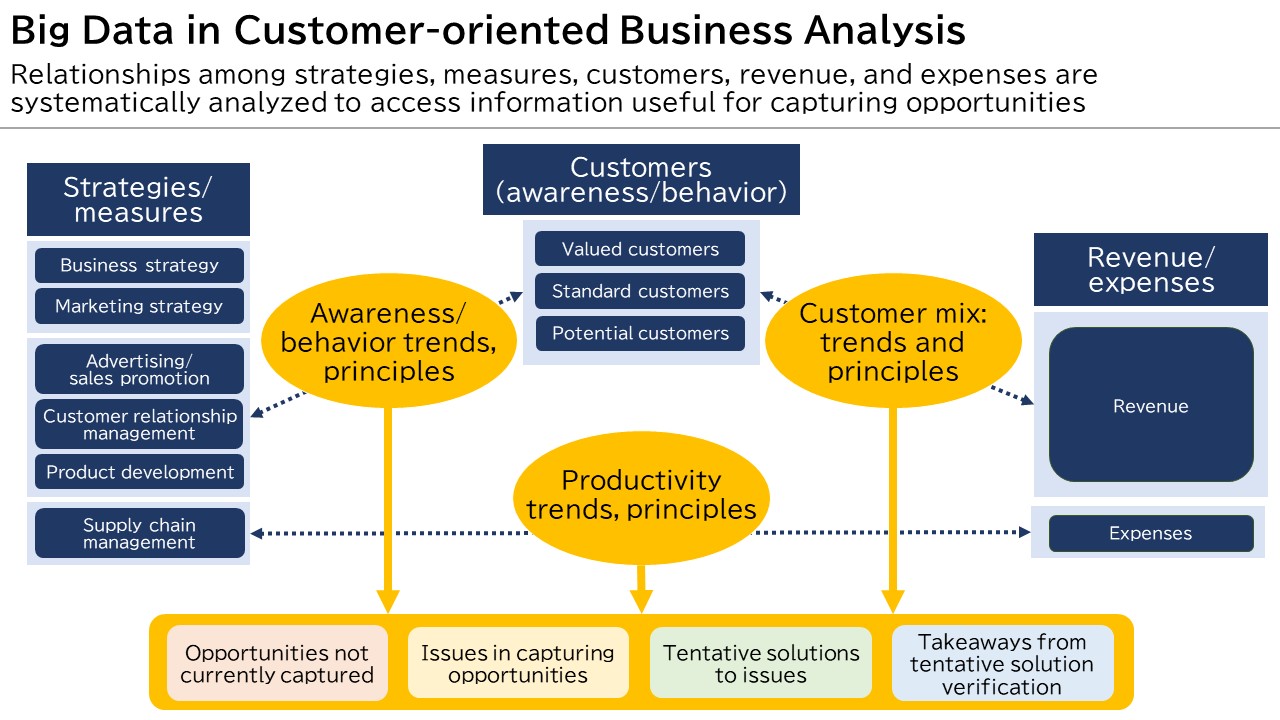
Predictions, Optimizations Help Decision-making
Traditionally, advertisements are placed to coincide with rising demand. Thus, sports drinks are advertised in the summer and hot drinks in the winter. However, with some products, we can use big data to better understand what triggers demand on, for example, a city, district, or daily basis. The development and use of this ability reflect the growing need to incorporate takeaways and improve marketing accuracy.
Dentsu has developed UREBIYORI, a proprietary demand-forecasting model algorithm using meteorological and other causal data, as well as MICHISIROU, marketing methodologies that include forecast information utilizing big data and AI. By developing measures incorporating these algorithms and methodologies, Dentsu helps clients capture new opportunities.
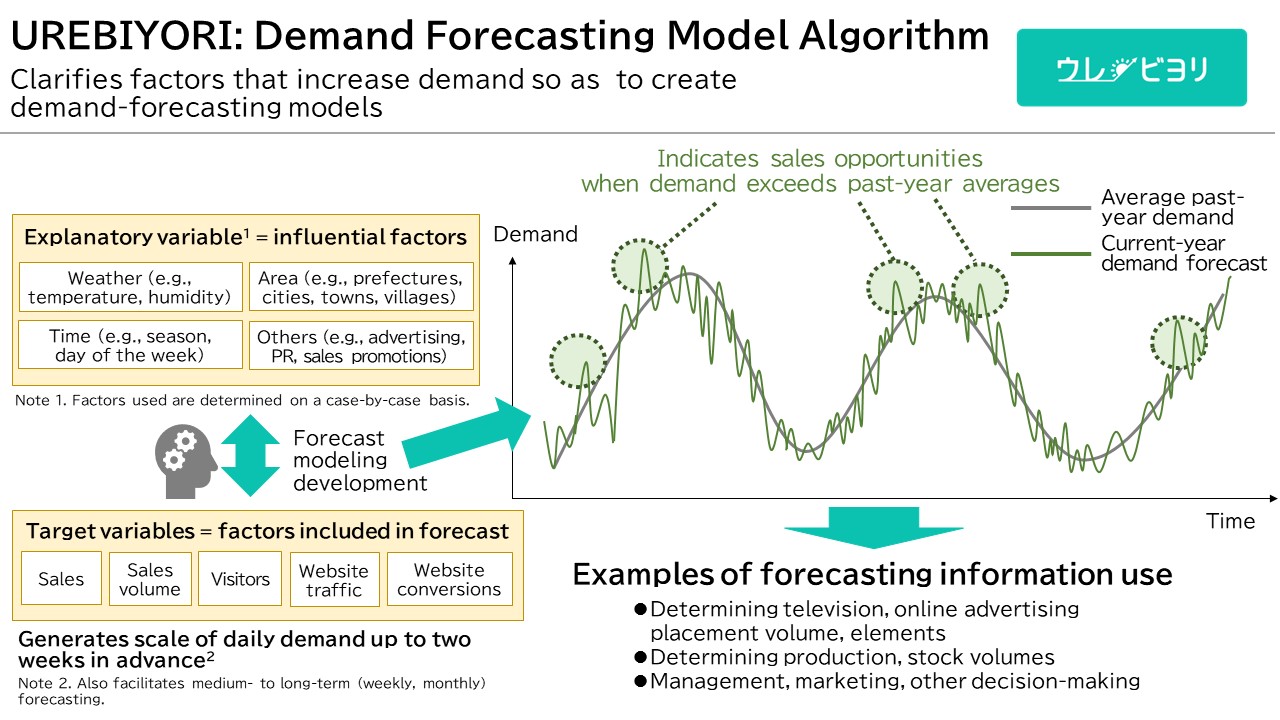
https://www.dentsu.co.jp/en/capabilities/ax/ax_1.html
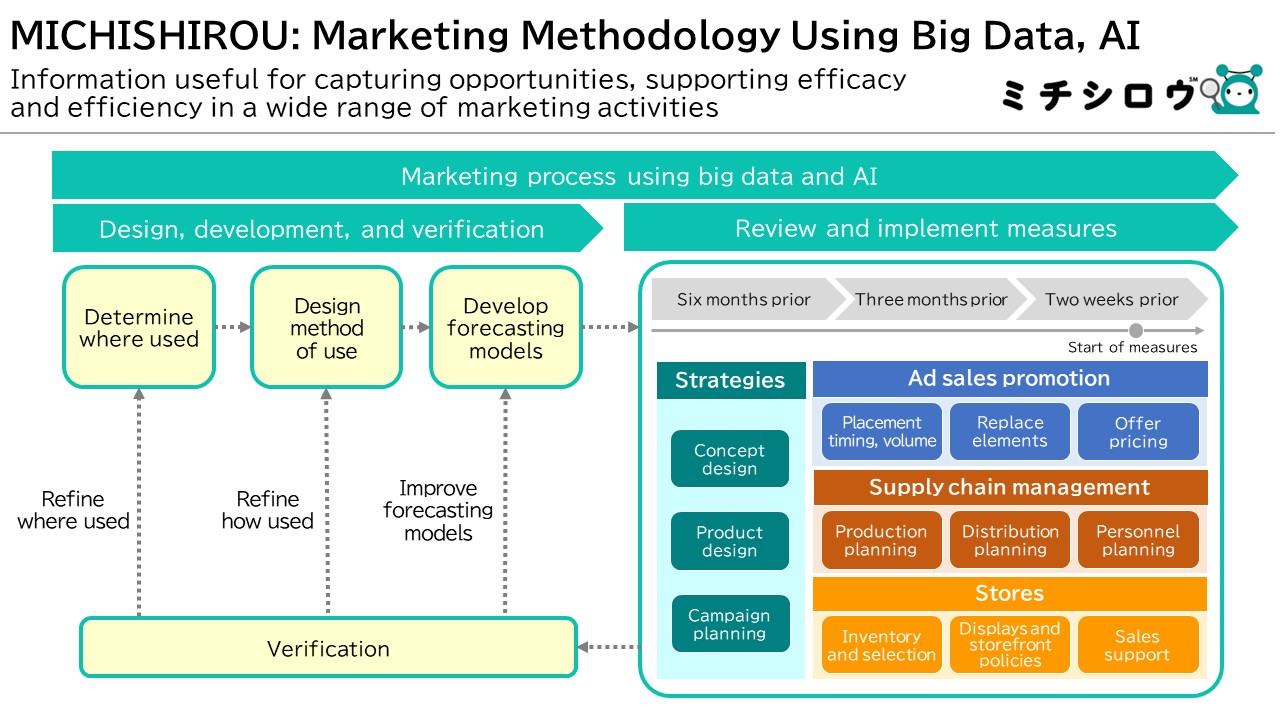
At present, the scope of forecasting is widening. For example, Dentsu has a database that predicts the next breakthrough content based on trends in chronological changes in content positioning, based on fixed-point observations using awareness and engagement criteria.
We also maintain data on target receptivity, affinity with the brand image we want to create, and purchase elasticity, which facilitates planning based on marketing objectives. This data is used to select tie-up content and cast program guests, ensuring even higher marketing effectiveness.
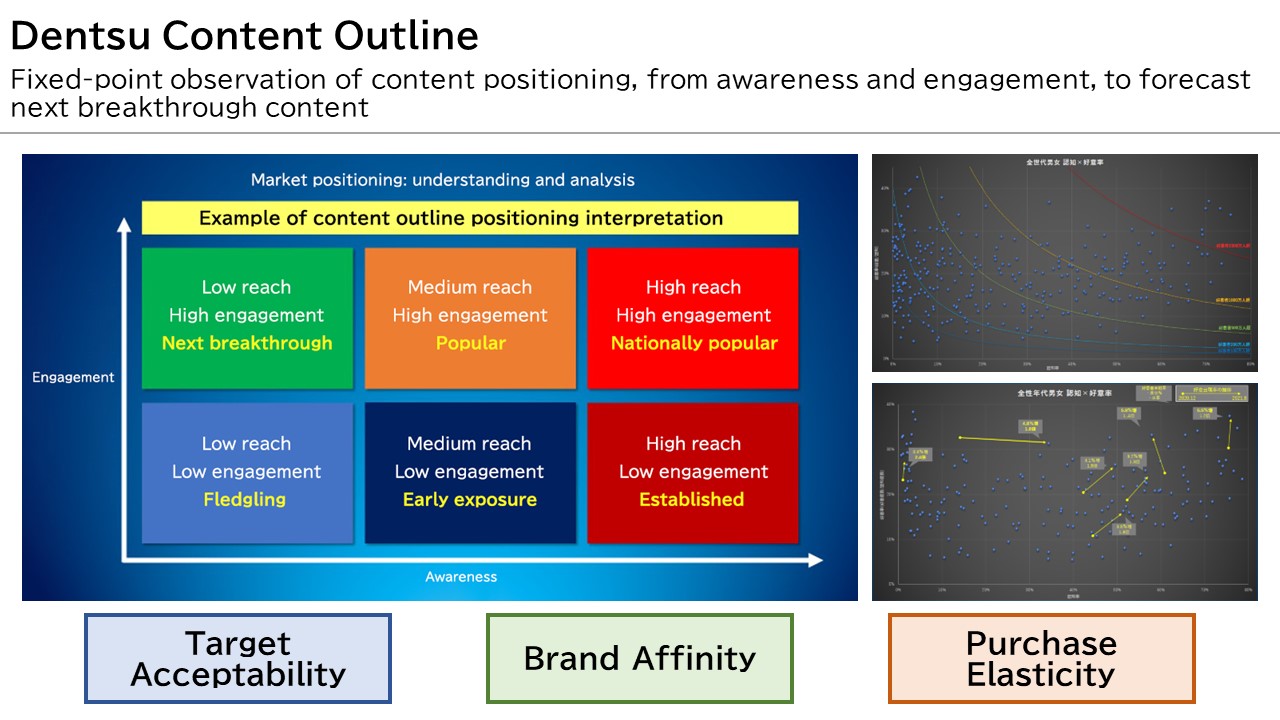
Similar to forecasting, optimization issues applied to distribution delivery routes are attracting attention as information useful for acquiring opportunities. For example, it has been found that the most efficient delivery patterns are derived from constraints, including the number of truck deliveries, hours of operation, and loading/unloading locations and timeframes.
Other factors are treated as optimization problems. These include the order and combination of destinations visited by sales representatives, as well as full- and part-time employee work scheduling. The feature all optimization problems have in common is that optimization calculations and software algorithms uncover unexpected permutations and combination patterns not discernable using conventional methods.
In principle, to resolve optimization problems, all possible permutations and combination patterns should be calculated to find the most effective pattern for a given variable. This, however, was impractical when conventional computer technology was being used since, depending on the content, an astronomical amount of time could be required.
Now, optimization problems can be resolved in a relatively short time by leveraging rapid advances in algorithms, optimization formulas, and quantum computing technology. This means a growing number of problems are expected to be resolved in the future.
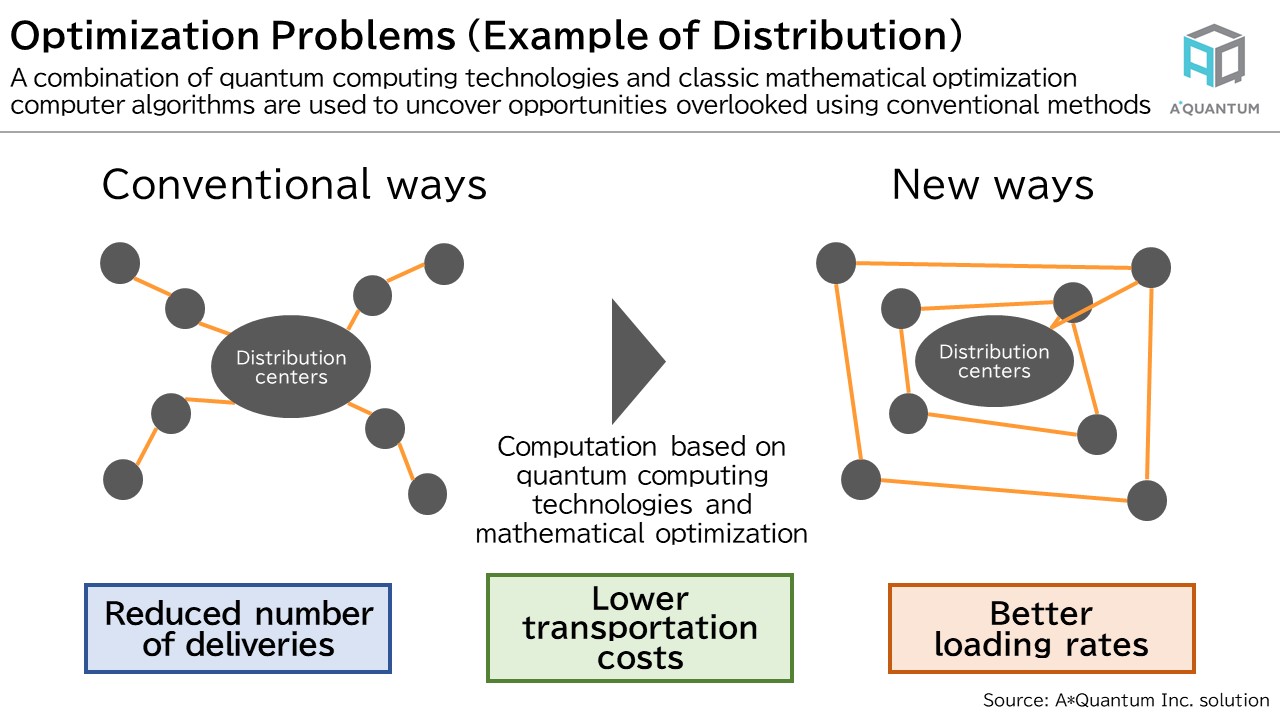
Extracting the Value of Big Data–AI Melding
To maximize the value provided by big data, we must create mechanisms to uncover information useful for capturing opportunities at all levels and in every business division. This applies from management to the frontlines of a company and beyond, so that information may be shared and used where needed.
Creating the relevant mechanisms requires the development of AI systems to support business operation design and execution. This includes strategic planning related to the use of big data. Also required is strategic support, such as human resource development and awareness activities, in a wide range of areas to further inculcate and entrench the efforts.
In addition, with expectations regarding AI increasing in the corporate sector, there are also uncertainties. Dentsu Group company Information Services International-Dentsu, Ltd. (ISID), has formulated a methodology for agile development that, better than the traditional waterfall approach, supports an exploratory, step-by-step process of improvement through trial and error in the face of uncertainties.
This reflects the Dentsu Group’s distinctive ability to promote Company-wide initiatives from a holistic and optimized perspective, with no separation between strategic planning, design, agile development, penetration, and establishment.
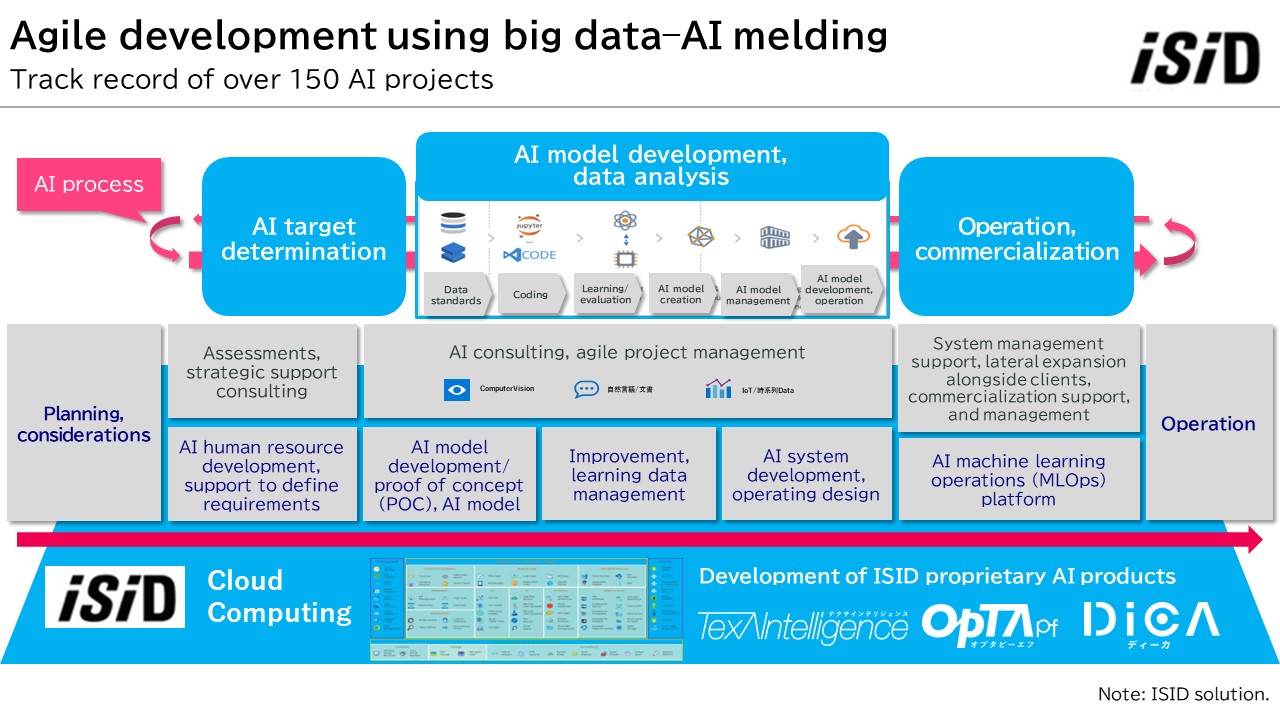
Opportunities that can be captured through the use of big data are steadily expanding. In the near future, the key success factor for corporate competitiveness will be the ability to implement digital transformation for business and marketing management by uncovering useful information from big data to capture opportunities and incorporate them in business and marketing decision-making.
Dentsu Inc., together with the Dentsu Group and its partner companies, will continue to expand their digital transformation capabilities based on this objective and thereby contribute to client company business and marketing growth.
Author

Hiroyuki Sakuragi
General Manager, Data Technology Center
Marketing Director
As a planner specializing in strategic problem solving using big data, Sakuragi is engaged in solution development and planning in a wide range of areas. These include advertising sales promotion, customer relationship management, product development, and supply chain management. Up to now, he has been involved in the resolution of numerous business issues in various industries and business categories, ranging from consumer and durable goods, to distribution, retail, and online shopping. He has made full use of technologies and techniques that include customer mix analysis; recency, frequency, monetary analysis; demand forecasting; optimization issues; marketing mix modeling; AI; and machine learning.
His publications include Discovering Your True Customers: Marketing ROI for Creating a Profitable Customer Mix, 2012, Nikkei Inc. (Japanese only.) Sakuragi has been certified as a Project Management Professional by the US-based Project Management Institute, and finished his master's degree from Waseda Business School.

